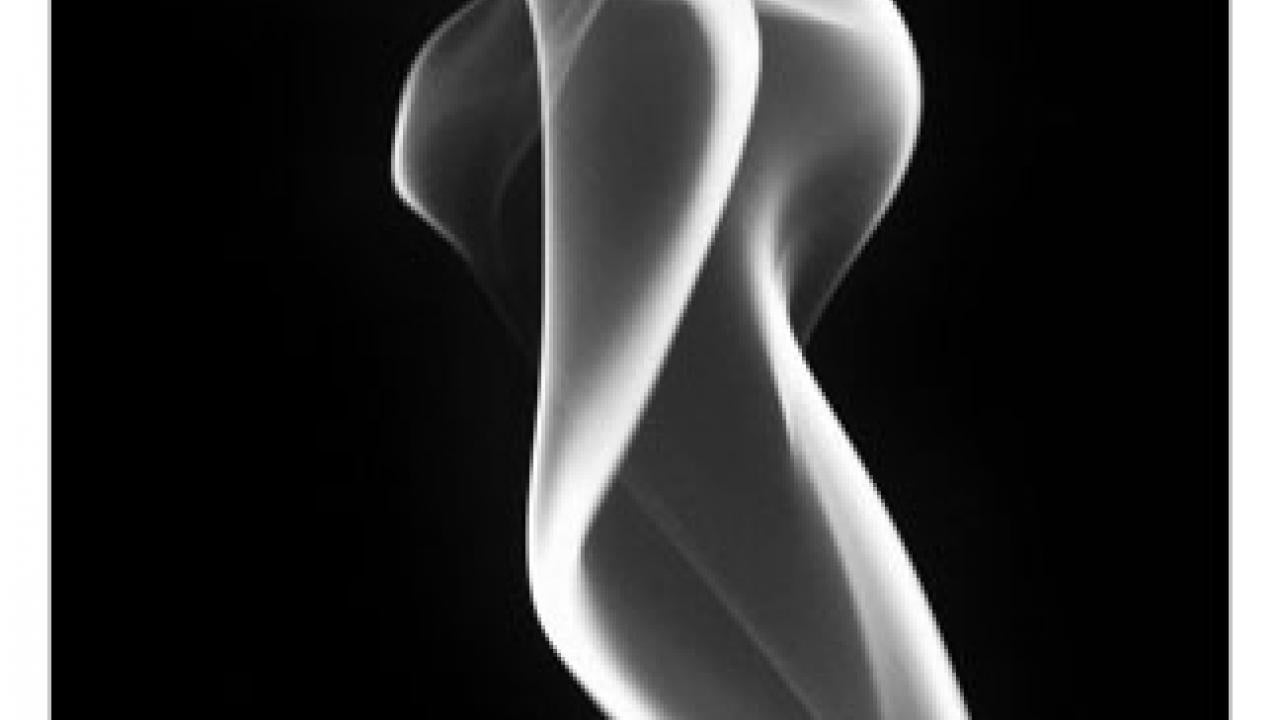UC Davis’ pioneering work in art-science connectivity took center stage at the annual meeting of the Pacific Division of the American Association for the Advancement of Science.
Five UC Davis representatives participated in the meeting’s Science and Art Consilience symposium. One of them, Professor Terry Nathan, displayed five of his art-science photographs in an art show that went along with the meeting’s theme: The Art of Science. Read more about Nathan’s entries below.
The meeting took place last month at Southern Oregon University in Ashland.
In the Science and Art Consilience symposium, Professor Diane Ullman and Davis-based artist Donna Billick discussed UC Davis’ Art-Science Fusion Program, in which instructors and students use various art forms — music, ceramics, graphics, textiles and photography — to explore the art-science connection.
Ullman and Billick developed their first art-science fusion class in 1997 and founded the Art-Science Fusion Program in 2006.
Ullman is an entomologist and associate dean for Undergraduate Academic Programs in the College of Agricultural and Environmental Sciences, and Billick is a program representative in the Art-Science Fusion Program and director of Billick Rock Art.
“It was extraordinarily exciting to see the Art-Science Fusion Program get this kind of recognition, at a symposium put on by one of the nation’s premier scientific organizations,” Ullman said.
“Presenting a symposium to this group was a wonderful opportunity to reach a broad audience with the innovative work that is blossoming at UC Davis.”
She and Billick gave a two-part presentation: “Living and Learning in the Intellectual Borderland.” Ullman said the audience — some of whom stood, for lack of seats — included artists, humanities scholars, social scientists, philosophers, biologists, physicists and chemists.
“The philosophical discussion that evolved gave all the participants a new way of looking at things,” she said.
Although the Art-Science Fusion Program takes in several art forms, the ceramics element has become the most visible. Each class takes on a large public art project, most notably Nature’s Gallery, which became a temporary exhibition at the United States Botanic Garden on the National Mall across from the Capitol.
Nature’s Gallery comprises 167 ceramic tiles depicting plants and insects found in the Storer Garden in the UC Davis Arboretum. The ceramic mural is in storage now, Ullman said, while the arboretum conducted a fundraising campaign to pay for the mural’s permanent installation in what will be called Nature’s Gallery Court, between the Storer Garden and the Arboretum Teaching Nursery.
The symposium also included presentations by Nathan and Wendy Silk. Both are professors in the Department of Land, Air and Water Resources, where Nathan teaches atmospheric science and Silk teaches soils and biogeochemistry.
Both of them lead Art-Science Fusion classes, as well, and those classes formed the basis for their AAAS meeting presentations: Nathan’s “Art and Science: Bridging the Two Cultures Through Photography” and Silk’s “How They Learned Science By Singing About It.”
Ann Savageau, associate professor of design and another collaborator in the Art-Science Fusion Program, participated in the same symposium, discussing the connections between art, design and building sustainability.
New York artist and Guggenheim Fellow Catherine Chalmers also participated; in 2008-09, she was a presenter in a UC Davis Centennial lecture series, The Consilience of Art and Science, organized by the Art-Science Fusion Program.
Dancing smoke
For the AAAS meeting’s art show, Professor Nathan submitted works from his “Where Kant Meets Newton” project, which Nathan described in his artist’s statement as follows: “I am exploring the intellectual borderland occupied by Kantian aesthetics and Newtonian mechanics, a realm where universal qualities shared by both art and science are brought to light by the fleeting sculptures formed in tiny whiffs of smoke.”
He explained that smoke photographs are relatively common, owing to their visually interesting structures — but structure that are often wispy and complex.
“My interest is to go beyond the wispiness and photograph ‘significant forms.’ To do so, I examine the very tiny structures within the smoke, which is technically challenging but visually and intellectually compelling.
“In these tiny, fleeting structures are notions of the sublime, the beautiful and the figurative, which are exemplified by symmetry, self-similarity, scale-invariance, order and disorder.
“For the scientist, these underlying properties are anchored in physical principles and mathematical structures that apply not only to ‘Kant meets Newton,’ but also to rivers, weather systems, galaxies and torso sculptures made in centuries past.
“For the artist, ‘Kant meets Newton’ exemplifies the interplay of light, tonal range and form. Whether scientist or artist, my goal is to evoke one’s intellectual curiosity and imagination through universal principles that are frozen by a momentary flash of light and fixed in a photographic print.”
Media Resources
Dave Jones, Dateline, 530-752-6556, dljones@ucdavis.edu
